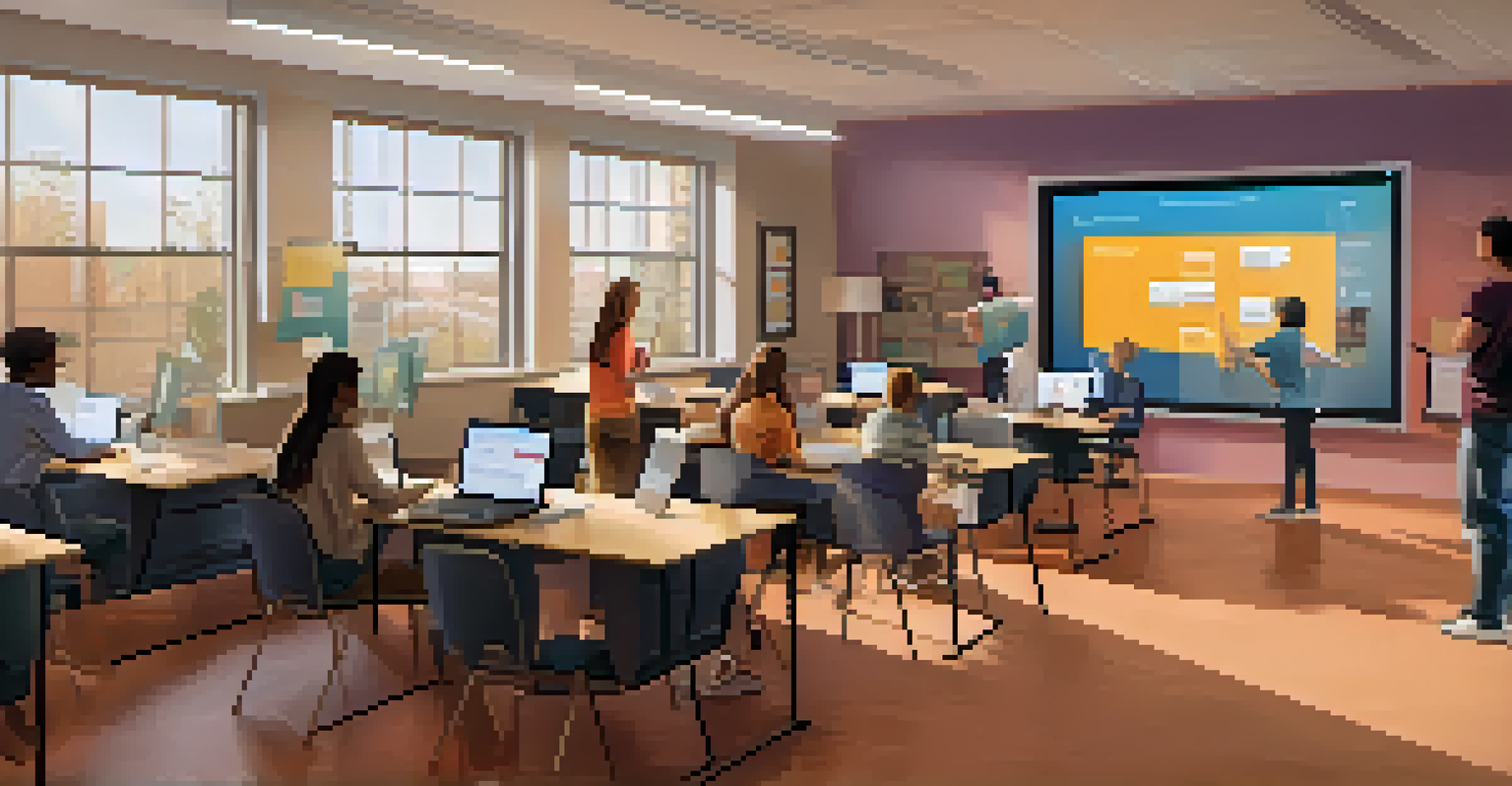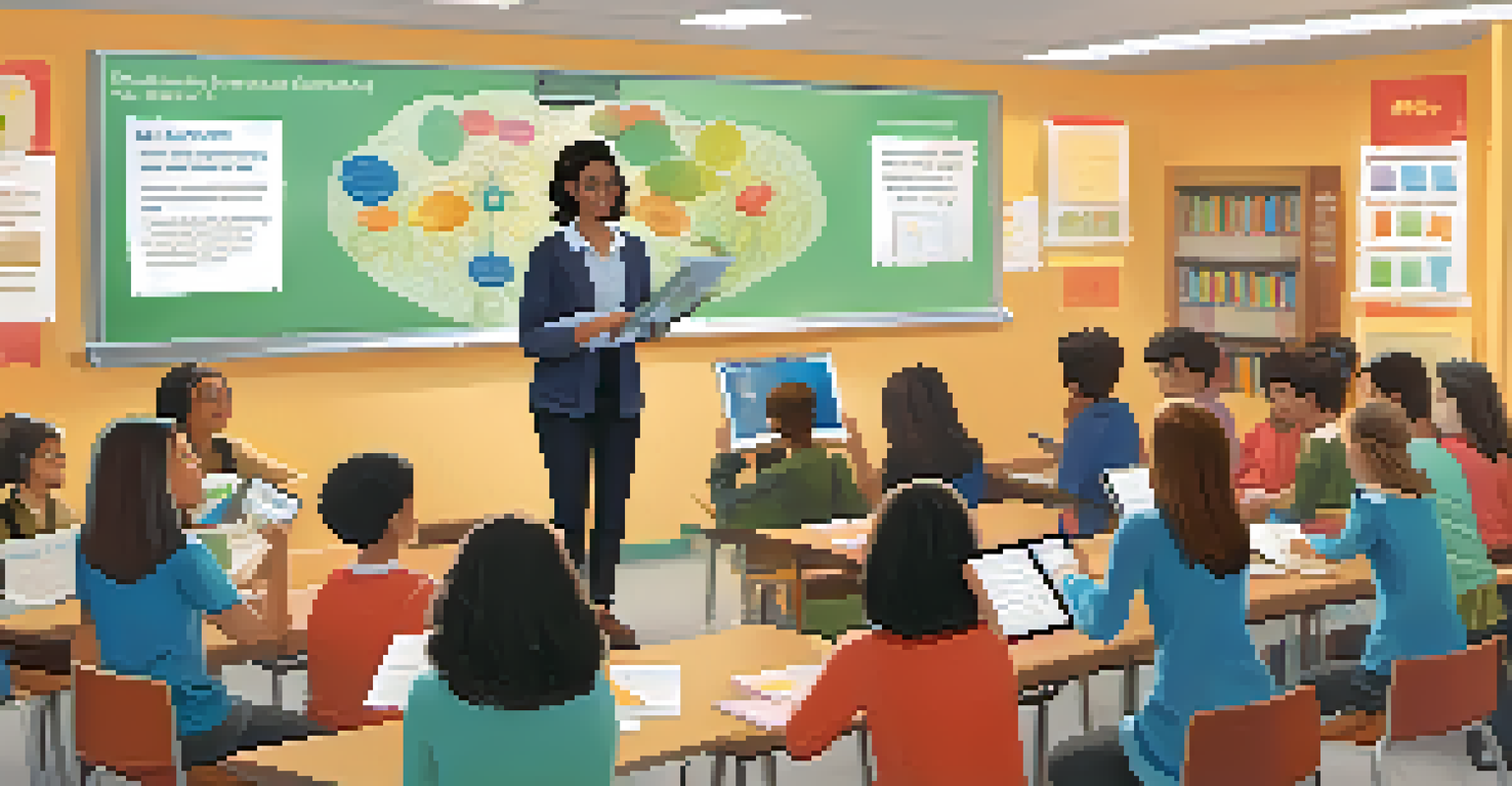Designing Inclusive Blended Learning Experiences for Students

Understanding Blended Learning and Inclusivity
Blended learning combines traditional face-to-face teaching with online activities, creating a flexible learning environment. This approach allows students to learn at their own pace, making it essential to consider inclusivity. When designing these experiences, it's vital to ensure that every student, regardless of their background or abilities, feels represented and engaged in the learning process.
Inclusivity is not a luxury; it is a necessity in today's diverse learning environments.
Incorporating inclusivity means recognizing the diverse needs of students, including those with disabilities, language barriers, and varied learning styles. For instance, a student with a hearing impairment may require captions on instructional videos, while another might benefit from interactive content. By anticipating and addressing these needs, educators can create a more welcoming space for all learners.
Ultimately, understanding the principles of blended learning and inclusivity sets the foundation for developing effective educational experiences. It’s about creating an environment where every student can thrive, ensuring that learning is not just accessible but also engaging and meaningful.
Identifying Diverse Learning Needs and Preferences
To design inclusive blended learning experiences, it's crucial to identify the diverse learning needs of students. Assessing each student's strengths, weaknesses, and preferences can guide educators in crafting tailored experiences. This might include surveys or one-on-one conversations to better understand how different students engage with content.

For example, some students may excel with visual aids, while others learn best through auditory instruction. By recognizing these preferences, educators can incorporate a variety of teaching methods, such as videos, podcasts, and interactive simulations. This variety not only caters to different learning styles but also keeps students engaged and motivated.
Blended Learning Enhances Flexibility
Blended learning combines in-person and online activities, allowing students to learn at their own pace while promoting inclusivity.
By actively seeking to understand the unique needs of each student, educators can create a blended learning environment that feels personalized and inclusive. This approach fosters a sense of belonging, encouraging students to participate more fully in their educational journey.
Utilizing Technology for Enhanced Accessibility
Technology plays a vital role in creating inclusive blended learning experiences. Leveraging various digital tools can help make learning materials accessible to all students. For instance, using screen readers, text-to-speech software, and adjustable font sizes can significantly benefit students with visual impairments or reading difficulties.
Technology is best when it brings people together.
Additionally, online platforms often offer features like closed captioning and language translation, making content more accessible to non-native speakers. By integrating these technologies, educators can ensure that every student has the resources they need to succeed. It's about removing barriers and creating equal opportunities for learning.
Incorporating accessible technology not only supports individual learning needs but also enriches the overall learning environment. When students can engage with materials in a way that suits them best, they are more likely to participate actively and retain information.
Creating Collaborative Learning Opportunities
Collaboration is a powerful tool in blended learning, fostering inclusivity and enhancing the educational experience. By encouraging students to work together, educators can provide opportunities for peer learning, which is beneficial for all. Group projects, discussion forums, and collaborative tools allow students to share their diverse perspectives and learn from one another.
For instance, using breakout rooms in virtual settings can facilitate small group discussions, allowing students to engage more deeply with the material. This setup can help quieter students share their thoughts without feeling overwhelmed in larger classes. Collaboration also builds essential social skills and encourages a sense of community among learners.
Technology Supports Accessibility
Utilizing digital tools like screen readers and closed captioning ensures learning materials are accessible to all students, regardless of their needs.
Ultimately, creating collaborative learning opportunities not only promotes inclusivity but also enriches the educational experience. Students learn valuable lessons from each other, and their collective insights can lead to a deeper understanding of the subject matter.
Implementing Flexible Assessment Strategies
Assessment is a critical component of blended learning, and flexibility is key to inclusivity. Traditional testing methods may not accurately reflect every student’s understanding or abilities. By implementing varied assessment strategies, educators can accommodate different learning styles and needs, ensuring that all students have the chance to demonstrate their knowledge.
For example, some students may excel in written assignments, while others might perform better in oral presentations or practical projects. Providing options allows students to choose the format that best showcases their strengths. This flexibility not only reduces anxiety but also fosters a growth mindset, encouraging students to take ownership of their learning.
Incorporating diverse assessment methods creates a more inclusive learning environment, allowing students to engage with the material in ways that resonate with them. This approach ensures that assessments are fair and representative of each student’s unique capabilities.
Fostering a Supportive Learning Community
Creating a supportive learning community is essential for inclusivity in blended learning environments. Establishing a culture of respect and understanding helps students feel safe and valued, which is critical for their engagement. This can be achieved through open communication, active listening, and encouraging peer support.
For instance, educators can create discussion boards where students can share their thoughts and experiences. This not only builds connections among students but also fosters empathy and understanding. When students feel they are part of a community, they are more likely to participate actively and support one another.
Collaboration Builds Community
Creating collaborative opportunities in blended learning fosters inclusivity and enhances the educational experience through peer learning.
A supportive learning community enhances the overall educational experience and reinforces the idea that everyone has something valuable to contribute. By prioritizing community-building, educators lay the groundwork for an inclusive environment where all students can flourish.
Continuous Evaluation and Improvement of Practices
Inclusivity in blended learning is an ongoing process, requiring continuous evaluation and improvement. Educators should regularly assess the effectiveness of their strategies and seek feedback from students to identify areas for growth. This iterative approach helps ensure that the learning environment remains responsive to the needs of all learners.
Conducting surveys or focus groups can provide valuable insights into how students perceive their learning experiences. By actively listening to their feedback, educators can make informed adjustments to improve inclusivity. This might involve refining instructional materials or incorporating new technologies to enhance accessibility.

Ultimately, committing to continuous evaluation and improvement demonstrates a dedication to creating an inclusive blended learning environment. By being open to change and responsive to student needs, educators can foster an educational experience that truly supports every learner.